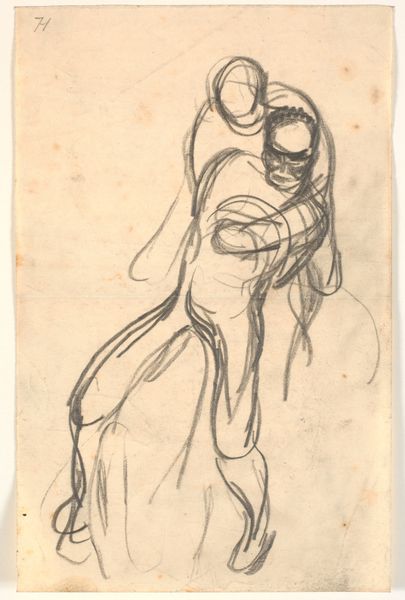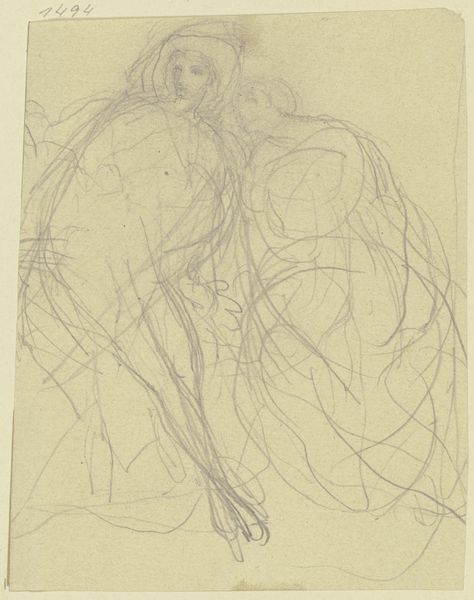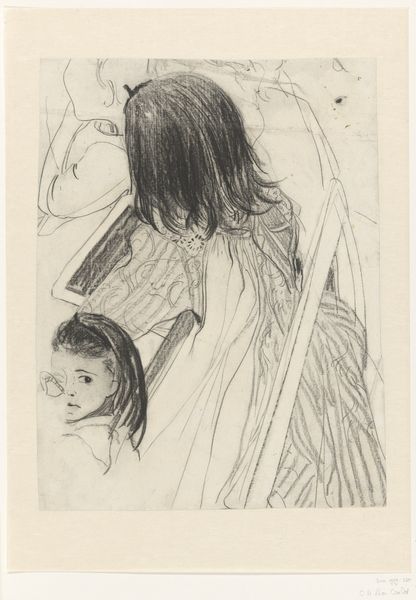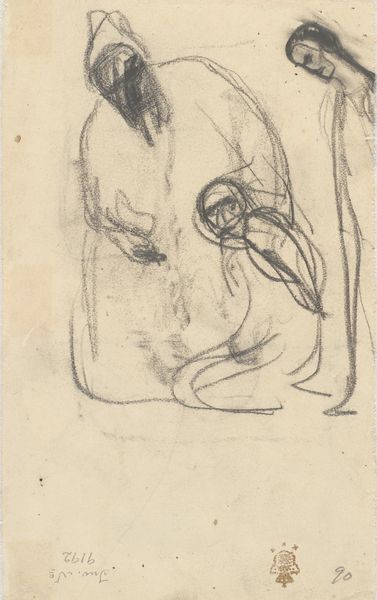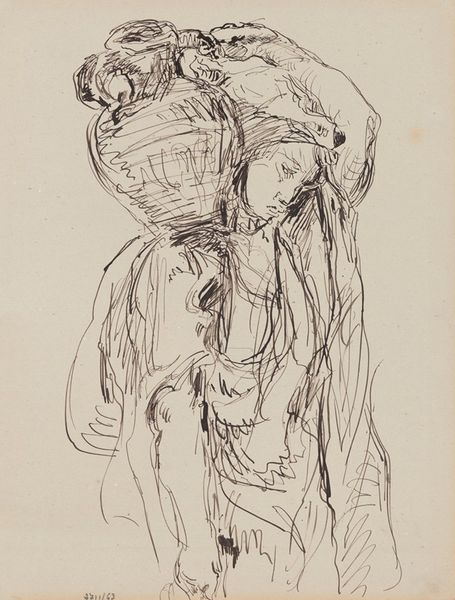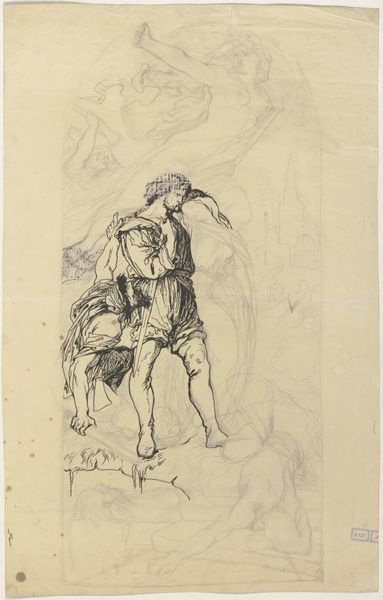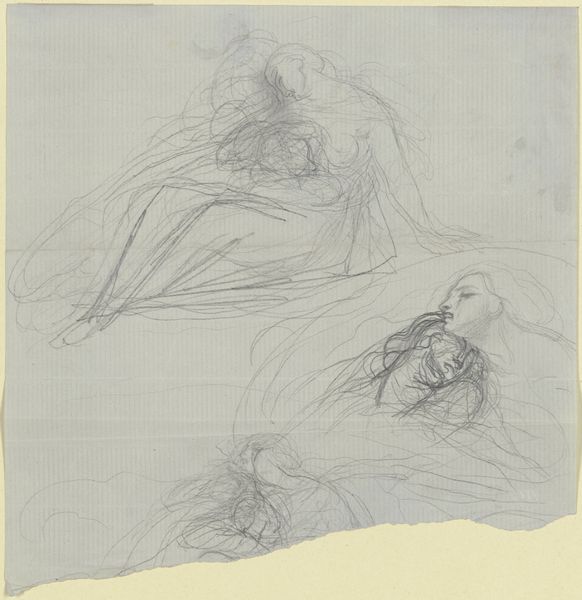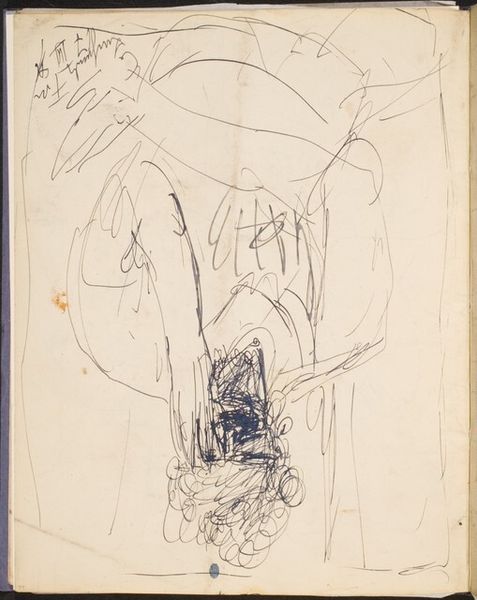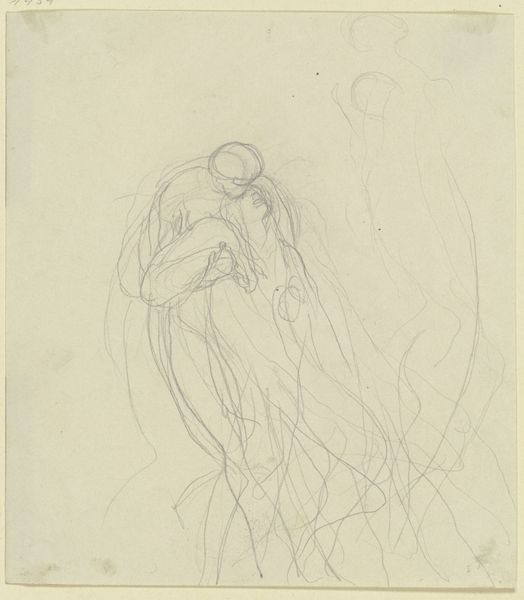
drawing, pencil
#
drawing
#
narrative-art
#
figuration
#
pencil
Dimensions: 314 mm (height) x 237 mm (width) (bladmaal)
Editor: This is Karl Isakson’s pencil drawing, "Tor klædes ud som brud og Loke som terne," made between 1907 and 1908. It's held here at the SMK. The sketch-like quality gives it an energy; a sense of figures caught mid-movement. What compositional choices stand out to you? Curator: The network of lines, how they intersect and create planes, interests me foremost. Observe how Isakson utilizes hatching to sculpt form and imply volume without resorting to conventional shading. Do you note how the rhythmic quality of the repeated strokes defines musculature and drapery alike? Editor: Yes, the lines do create definition despite their sketchiness! The composition is odd though. The figures seem awkwardly placed in the pictorial space and oddly proportioned. Is that intentional, do you think? Curator: Undoubtedly. Note the deliberate flattening of space, the negation of a traditional illusionistic depth. Isakson is concerned less with mimetic representation than with the articulation of a subjective vision. How does the interplay between positive and negative space influence your perception of the narrative? Editor: I see what you mean about the subjective vision. It does add to the mythical feel, like we're catching glimpses of a legend rather than a posed portrait. I initially struggled with the figures themselves but your reading helps to make more sense of how space interacts with the drawing’s subject matter. Curator: Precisely. It's a negotiation between representation and abstraction, a push and pull that enlivens the entire composition. Understanding the interplay of these visual elements permits us to better engage with Isakson's project.
Comments
No comments
Be the first to comment and join the conversation on the ultimate creative platform.
